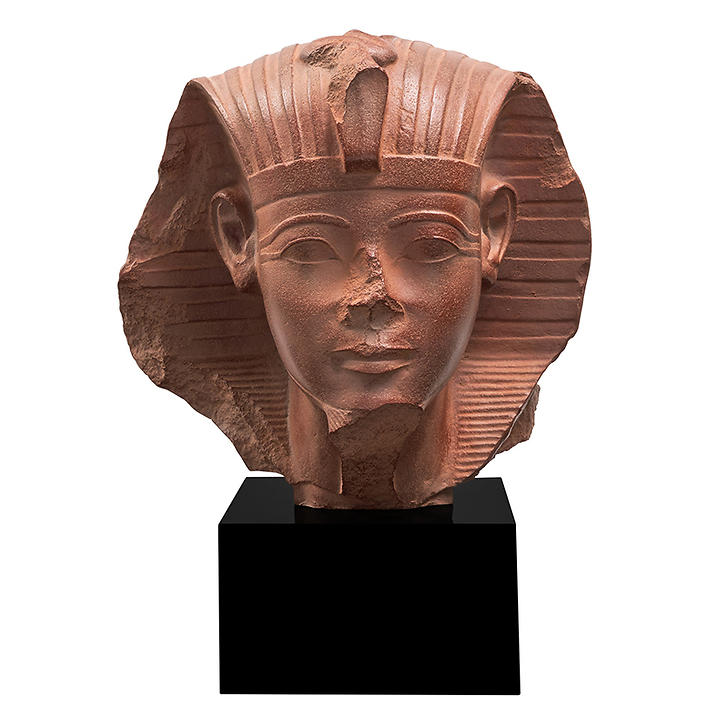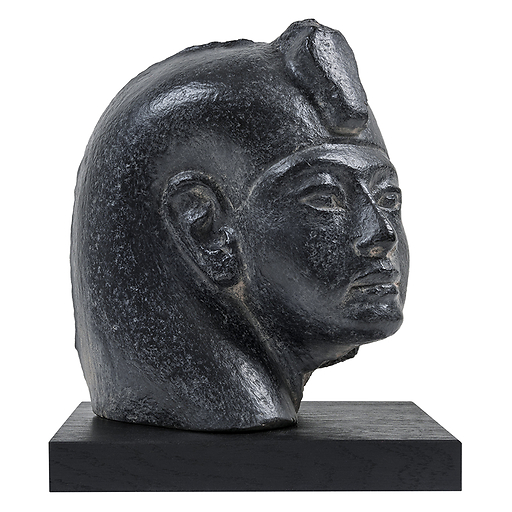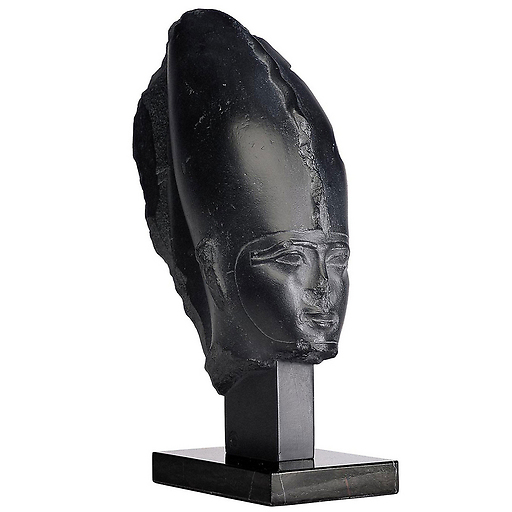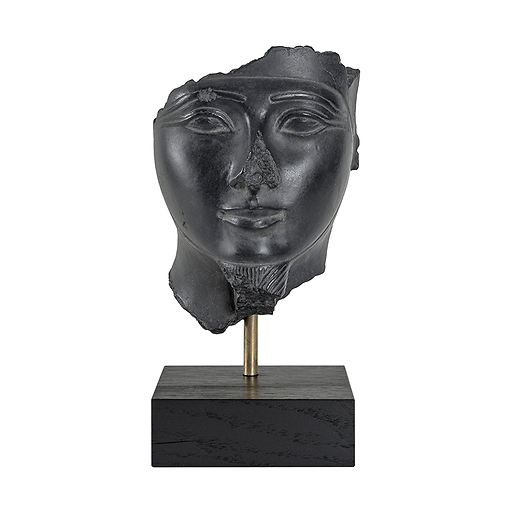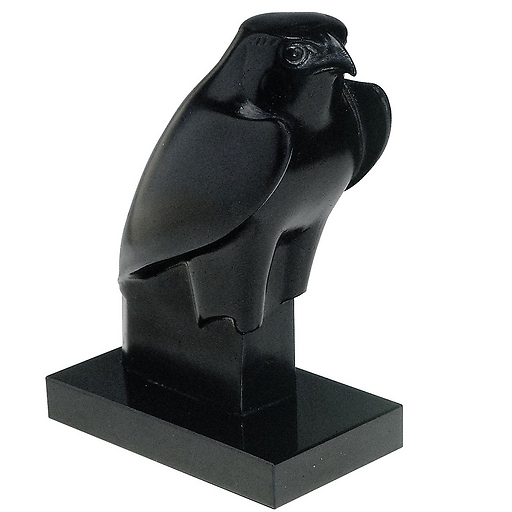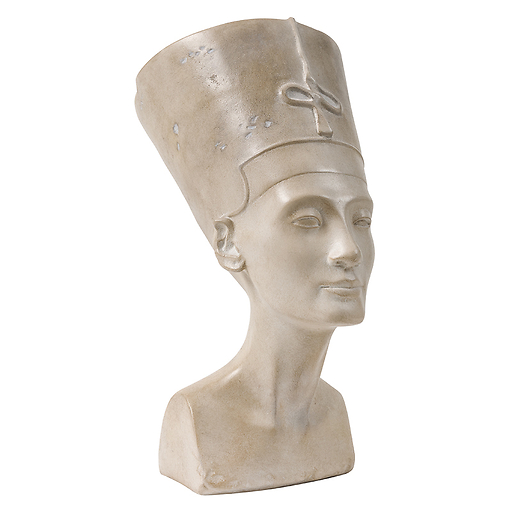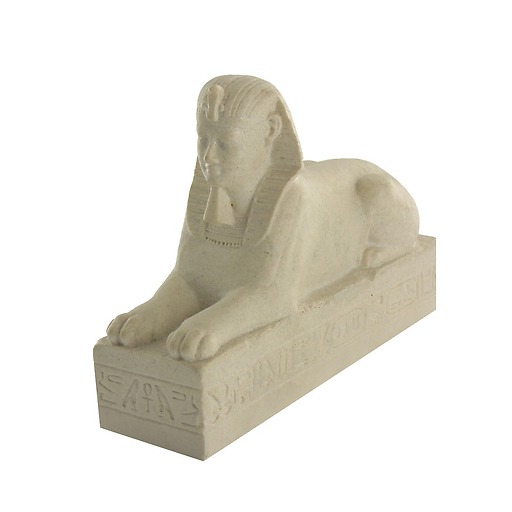Reproduction patinated by hand on a black wooden base. Mold made from an imprint of the original work exhibited at the Louvre.
The original of this exceptional sculpture, a masterpiece of the 18th Dynasty, has been on display in the Department of Egyptian Antiquities for many years. It was acquired...
Read more
Reproduction patinated by hand on a black wooden base. Mold made from an imprint of the original work exhibited at the Louvre.
The original of this exceptional sculpture, a masterpiece of the 18th Dynasty, has been on display in the Department of Egyptian Antiquities for many years. It was acquired by the Louvre in 1900. This royal head, with its rather elongated face, is covered in a striped nemes, the customary headdress of sphinxes and statues of dead kings. It consists of a piece of material, probably decorated with coloured stripes, flaring out at each side of the ears and falling over the chest. It ends in a kind of bow at the back. On the front is a large uraeus with an undulating body (a female cobra), the protector and symbol of royalty. It is set against a flat diadem encircling the head, above the very high and fleshy ears. The eyes are lengthened with a line of eye shadow and the brows are stylized. These details give the sculpture a kind of pensive majesty despite the small smiling mouth. The eyes were originally highlighted in colour, like the entire statue. The round chin is prolonged by a finely braided false beard which was fastened by two cords, now broken. The angle of the nemes and the horizontal fragment of shoulder prove that this head belonged to a sphinx.
It is now believed that it might be the portrait of Amenophis II, since sculptors in the royal workshops always had a tendency to idealize their models. The rounded brows, horizontal eyes, small mouth, and narrow face would seem to indicate that this exquisitely finished work was sculpted at the end of the reign of Amenophis II, a Pharaoh famous for his Herculean strength (1450-1425 B.C.) or perhaps, on the contrary, during the reign of his father, the great conqueror Tutmose III (1504-1450 B.C.).
Close
